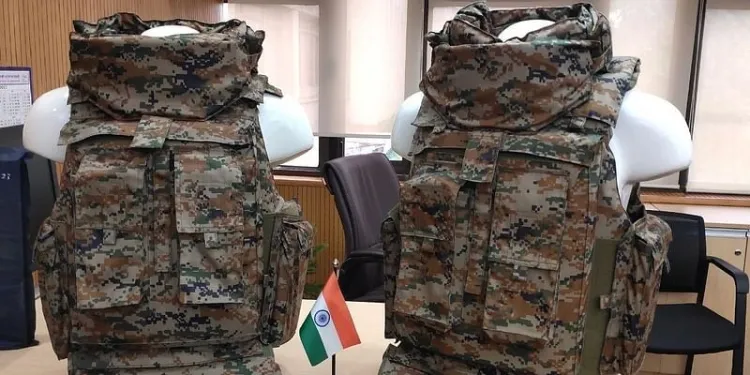The Development and Importance of Bulletproof Jackets...!!!
Bulletproof jackets, often referred to as ballistic vests or body armor, are protective garments designed to absorb and lessen the impact of bullets or other projectiles. They have become crucial equipment for military personnel, law enforcement officers, and security professionals. Let's delve into the history, technology, and significance of bulletproof jackets.

Historical Background
The idea of body armor dates back to ancient times when warriors used leather and metal for protection. However, the modern bulletproof jacket emerged in the early 20th century. During World War I, soldiers experimented with steel plates sewn into their uniforms, but these early attempts were heavy and unwieldy.
A major breakthrough occurred in the 1960s with the invention of Kevlar by Stephanie Kwolek at DuPont. Kevlar is a synthetic fiber known for its exceptional strength-to-weight ratio, making it an ideal material for ballistic protection. This invention revolutionized personal protective equipment and laid the groundwork for the modern bulletproof jacket.

Types of Bulletproof Jackets
There are several types of bulletproof jackets, each tailored for specific threats and environments. Here are the main categories:
1. Soft Body Armor: Made from layers of woven or laminated fibers such as Kevlar, Twaron, or Dyneema. These vests are lightweight and flexible, offering protection against handgun rounds and some shrapnel. They are commonly worn by police officers and security personnel for daily use.
2. Hard Body Armor: Includes rigid plates made from materials like ceramic, steel, or ultra-high-molecular-weight polyethylene (UHMWPE). These vests are heavier but provide enhanced protection against high-velocity rifle rounds. They are typically used by military personnel and special operations forces.
3. Stab and Spike Proof Vests: Designed to protect against stabbing and slashing attacks. These vests use materials like chainmail or rigid polymers to prevent sharp objects from penetrating the body.
4. Multi-Threat Vests: Combine ballistic and stab protection, offering comprehensive defense against various threats.
How Bulletproof Jackets Work
Bulletproof jackets work by dispersing the energy of a projectile over a larger area, preventing it from penetrating the body. Here’s a simplified explanation of the process:
1. Absorption: When a bullet hits the vest, the outer layers absorb the kinetic energy, slowing down the projectile.
2. Dispersal: The material spreads the force across a wider area, reducing the likelihood of penetration.
3. Deformation: The bullet deforms as it strikes the vest, losing its shape and energy, further decreasing its ability to cause harm.
4. Layered Protection: Multiple layers of ballistic fibers work together to catch and deform the bullet, providing additional safety.
Standards and Ratings
Bulletproof jackets undergo rigorous testing and must meet specific standards to ensure their effectiveness. The National Institute of Justice (NIJ) in the United States sets the most widely recognized standards. These standards classify vests into different levels based on their ability to stop specific types of ammunition:
-NIJ Level IIA: Protects against 9mm and .40 S&W handgun rounds.
- NIJ Level II: Protects against 9mm and .357 Magnum handgun rounds.
- NIJ Level IIIA: Protects against .357 SIG and .44 Magnum handgun rounds.
- NIJ Level III: Protects against 7.62mm NATO rifle rounds.
- NIJ Level IV: Protects against armor-piercing rifle rounds.

Importance and Applications
Bulletproof jackets are essential for protecting the lives of those who face the threat of gunfire. They are used by:
- Military Personnel: Crucial for soldiers in combat zones, offering protection against bullets and shrapnel.
- Law Enforcement: Worn by police officers and SWAT teams during high-risk operations.
- Security Personnel: Utilized by bodyguards and security professionals to protect high-profile individuals.
- Civilians: Some civilians, particularly in dangerous areas, may also use bulletproof jackets for personal protection.
Innovations and Future Trends
The field of ballistic protection continues to advance, with ongoing research focused on developing lighter, stronger, and more flexible materials. Innovations such as liquid armor, which hardens upon impact, and graphene, a super-strong material, hold promise for the next generation of bulletproof jackets.
Bulletproof jackets are a testament to human ingenuity in the pursuit of safety and protection. As technology progresses, these vests will continue to play a vital role in safeguarding those who risk their lives to protect others. Whether for military, law enforcement, or personal use, bulletproof jackets remain a symbol of resilience and security in an unpredictable world.
What's Your Reaction?

















